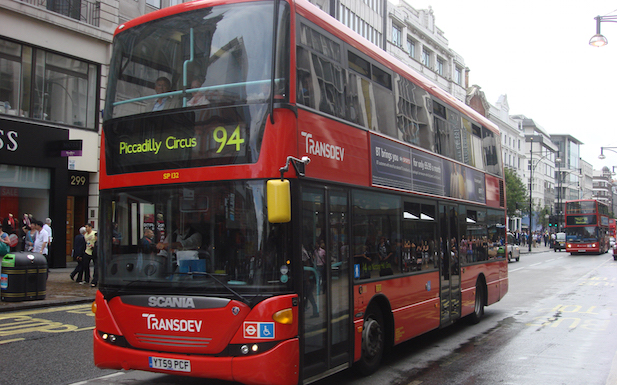Buses across London have been equipped with Bluetooth Low Energy beacons to send targeted in-app messages to passengers.
The technology has been installed in 500 buses by advertising company Exterion and mobile marketing specialist Proxama.
The rollout follows a six month trial in the UK city of Norwich, which involved beacons being fitted onto 110 buses. The companies found 30 percent of users clicked through upon receiving a notification from advertisers. There were 2,000 app downloads during the trial.
Both companies said London’s high smartphone penetration, which it claimed was 94 percent, and average bus journey length of around 18 minutes meant passengers were a prime target for marketing messages.
Jason Cotterrell, Managing Director UK, Exterion Media, said: “We are continually seeking new and innovative ways to connect brands with consumers and this solution will engage audiences on the move in a way that builds meaningful and mutually beneficial relationships.
“We believe the future of out of home engagement is the ability to deliver a truly personal experience; and, with so many of us keeping our smartphones handy during the bus trips we take every day, it makes sense to combine the two. Our ultimate aim is to deploy this technology across our portfolio nationwide, with a long-term vision of providing full connectivity across buses in the UK.”
John Worley, CEO of Proxama Marketing Division, added: “The trial in Norwich and our partnership with Exterion Media showed us that consumers are open to receiving content via their mobile devices while they travel, so we expect to experience a similar level of success once we roll out across London.
“By ensuring that content pushed to users is relevant, personal and received at the right time, beacons are set to enhance Londoners’ commuting experiences.”
Earlier this year, London Underground launched a trial of Bluetooth beacons to help visually impaired passengers navigate the Tube network.
Last month, Telefónica signed a deal with Exterion to provide advertisers on the London Underground with data about O2 customers.



